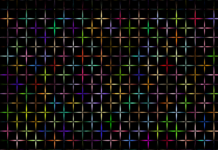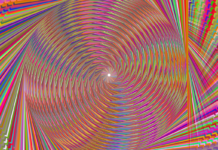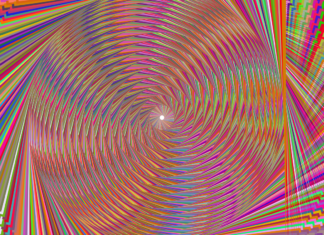3D Holographic Displays: Revolutionizing Visual Experiences
In the realm of cutting-edge technology, 3D holographic displays have emerged as a remarkable innovation that is poised to revolutionize the way we perceive and interact with visual content. Unlike traditional displays that are confined to two dimensions, 3D holographic displays offer a leap forward by presenting three-dimensional images that appear to float in space, unbound by the limitations of screens and frames. This advancement holds the promise of transforming various industries, from entertainment and advertising to education and healthcare, by providing an immersive and captivating visual experience that was previously thought to be confined to the realms of science fiction.
At its core, a 3D holographic display is a technology that creates the illusion of three-dimensional images by utilizing the principles of light diffraction and interference. Unlike traditional displays that emit light directly, holographic displays operate based on the interference patterns generated by light waves. This complex interplay of light creates an image that seems to have depth and form, akin to real-world objects. The result is an optical illusion that enables viewers to perceive images in three dimensions without the need for specialized glasses or other accessories.
The concept of holography, the foundation of 3D holographic displays, was first introduced by Hungarian-British physicist Dennis Gabor in the 1940s. However, it wasn’t until technological advancements in lasers and computational power occurred that practical implementations of holography became possible. Modern 3D holographic displays rely on sophisticated techniques such as spatial light modulation, interference patterns, and precise beam steering to create realistic and interactive 3D images. By controlling the direction, intensity, and color of light beams, these displays can reproduce objects that seemingly exist in physical space, allowing viewers to observe them from different angles, just as they would with real objects.
The potential applications of 3D holographic displays span a wide range of industries and fields. In the realm of entertainment, these displays could redefine how we experience movies, video games, and live performances. Imagine watching a movie and feeling as if the characters are right there in your living room, or playing a video game where the virtual environment is not confined to a screen but extends into the space around you. Such immersive experiences have the potential to create a new level of engagement and emotional connection for audiences.
The advertising and marketing sectors are also eyeing the possibilities offered by 3D holographic displays. Traditional advertising methods are often limited to flat, two-dimensional visuals that compete for attention in a crowded visual landscape. By contrast, holographic displays can generate eye-catching and attention-grabbing advertisements that literally pop out and engage viewers in a novel way. From product demonstrations that appear to materialize in mid-air to interactive holographic storefronts, advertisers have a new canvas to explore and captivate their target audiences.
In the realm of education, 3D holographic displays hold the potential to revolutionize how students learn complex subjects. Imagine a biology class where students can observe and dissect holographic representations of organs and cells, or a history lesson where ancient civilizations come to life in the classroom. By providing a visual and interactive dimension to learning, these displays could enhance comprehension and retention of information across various disciplines.
Beyond entertainment, advertising, and education, 3D holographic displays could find applications in fields such as medical imaging and visualization. Surgeons could use holographic representations of patients’ anatomy to better plan and execute procedures. Similarly, architects and engineers could collaborate on holographic models of buildings and structures, allowing them to identify and address potential issues before construction even begins. The medical and engineering sectors stand to benefit immensely from the spatial accuracy and immersive nature of 3D holographic displays.
In conclusion, 3D holographic displays stand as a remarkable technological advancement with the potential to redefine how we perceive and interact with visual content. By harnessing the principles of light diffraction and interference, these displays create realistic three-dimensional images that appear to exist in physical space. The applications span across entertainment, advertising, education, and various professional fields, offering novel ways to engage audiences and enhance learning and problem-solving. As this technology continues to evolve, we can anticipate a future where the boundaries between the virtual and physical worlds blur, opening up new avenues for creativity, communication, and exploration.
Here are five key features of 3D holographic displays:
Immersive Depth Perception:
One of the most distinctive features of 3D holographic displays is their ability to create an immersive depth perception. Unlike traditional 2D displays, holographic displays project images that appear to have real depth, allowing viewers to perceive objects as if they were physically present. This feature enhances the overall visual experience, making content more engaging and captivating.
Multi-Angle Viewing:
3D holographic displays enable multi-angle viewing, allowing users to observe projected images from various perspectives, just like they would with real objects. This capability enhances interactivity and realism, making it possible to explore virtual objects from different angles and facilitating a deeper understanding of complex subjects.
No Special Glasses Required:
Unlike earlier attempts at 3D displays that often required viewers to wear specialized glasses to perceive the three-dimensional effect, modern holographic displays eliminate the need for such accessories. Viewers can experience the 3D effect with the naked eye, making the technology more user-friendly and accessible.
Interactive Capabilities:
Many 3D holographic displays are equipped with interactive features, allowing users to manipulate and interact with virtual objects in real time. This capability opens up opportunities for applications in fields like education, where students can engage with holographic content to enhance their learning experience, and in product presentations, where potential customers can interact with virtual prototypes.
Attention-Grabbing Visuals:
The ability of 3D holographic displays to generate attention-grabbing visuals sets them apart in advertising and marketing. Holographic advertisements and presentations have a unique visual appeal that stands out in crowded environments, drawing viewers’ attention and making a lasting impression. This feature has the potential to revolutionize the way brands communicate with their audiences.
Incorporating these key features, 3D holographic displays offer a versatile and transformative technology that has the potential to reshape industries ranging from entertainment and education to healthcare and beyond.
3D holographic displays have emerged as an innovation that holds immense potential to reshape the way we perceive visual content. The technology behind these displays draws from the realm of holography, a field that was first conceptualized by physicist Dennis Gabor in the mid-20th century. Gabor’s work laid the foundation for holography, which involves capturing and reconstructing light waves in a way that creates the illusion of three-dimensional objects in space. However, it was only in recent years, with advancements in laser technology, computational power, and optics, that 3D holographic displays have become a feasible reality.
At the heart of 3D holographic displays lies the principle of diffraction. Diffraction refers to the bending of light waves as they encounter obstacles or pass through narrow openings. In the context of holography, a beam of light is split into two parts: the object beam and the reference beam. The object beam is directed onto the object whose hologram is to be created, while the reference beam is directed onto a photographic plate. When these beams intersect, they create an interference pattern on the photographic plate, which captures the phase and amplitude information of the light waves. This interference pattern, or hologram, contains the encoded information about the three-dimensional object.
To reconstruct the holographic image, the recorded interference pattern is illuminated with coherent light, typically provided by lasers. When the light hits the hologram, it diffracts, recreating the original object beam and reference beam. This results in the recreation of the original wavefronts and creates the perception of a three-dimensional image. This image can be viewed without the need for specialized glasses or other optical aids, enhancing the immersive experience.
In the realm of entertainment, 3D holographic displays have the potential to redefine how we engage with visual narratives. Traditional movies and television shows are restricted by the confines of two-dimensional screens. However, holographic displays offer the possibility of breaking free from these constraints. Imagine watching a film and having characters and scenes materialize in your living room, effectively blurring the line between fiction and reality. Additionally, live performances, such as concerts and theater productions, could leverage holographic displays to create dynamic and captivating experiences that immerse the audience in the artistic vision.
Beyond entertainment, industries such as healthcare could benefit from the spatial accuracy and interactive capabilities of 3D holographic displays. Medical imaging, in particular, could see significant advancements. Surgeons could use holographic representations of patient anatomy to better plan and execute surgeries. These holographic visualizations would enable surgeons to analyze complex structures from multiple angles, aiding in precision and minimizing risks. Similarly, medical training and education could be enhanced through interactive holographic simulations, allowing students to virtually explore anatomical structures and medical procedures.
The world of design and engineering also stands to gain from 3D holographic displays. Architects and engineers could collaborate on holographic models of buildings and structures, facilitating real-time design changes and problem-solving. This technology could prove invaluable during the initial stages of projects, allowing stakeholders to visualize and interact with the proposed designs before any physical construction begins. This iterative approach could lead to more efficient and effective design processes.
In education, 3D holographic displays offer a new dimension of learning. Complex scientific concepts, historical events, and artistic masterpieces can be brought to life through interactive holographic representations. Students could manipulate virtual objects, explore historical scenes, and dissect biological structures in ways that were previously impossible. This tactile and immersive learning experience could have a profound impact on comprehension and engagement, especially for subjects that benefit from visual and interactive elements.
The integration of 3D holographic displays in consumer electronics could redefine how we interact with our devices. Smartphones and tablets could incorporate holographic interfaces, allowing users to navigate through applications and content with gestures and movements. This departure from traditional touchscreens could lead to novel ways of interaction, promoting creativity and innovation in user interface design.
As the technology continues to evolve, challenges remain. Current 3D holographic displays often require controlled lighting conditions to achieve optimal image quality. Moreover, the size and cost of these displays can be prohibitive for widespread adoption. However, ongoing research and development are addressing these issues, aiming to make holographic displays more accessible and practical.
In conclusion, 3D holographic displays represent a remarkable advancement in the realm of visual technology. Their ability to create immersive three-dimensional images holds promise across various sectors, from entertainment and education to medicine and design. By harnessing the principles of diffraction and interference, these displays offer a bridge between the virtual and physical worlds, enabling us to interact with digital content in ways that were once relegated to the realm of science fiction. As these displays continue to evolve and become more accessible, they have the potential to redefine how we experience and interact with visual information, ushering in a new era of dynamic and engaging content consumption.


















